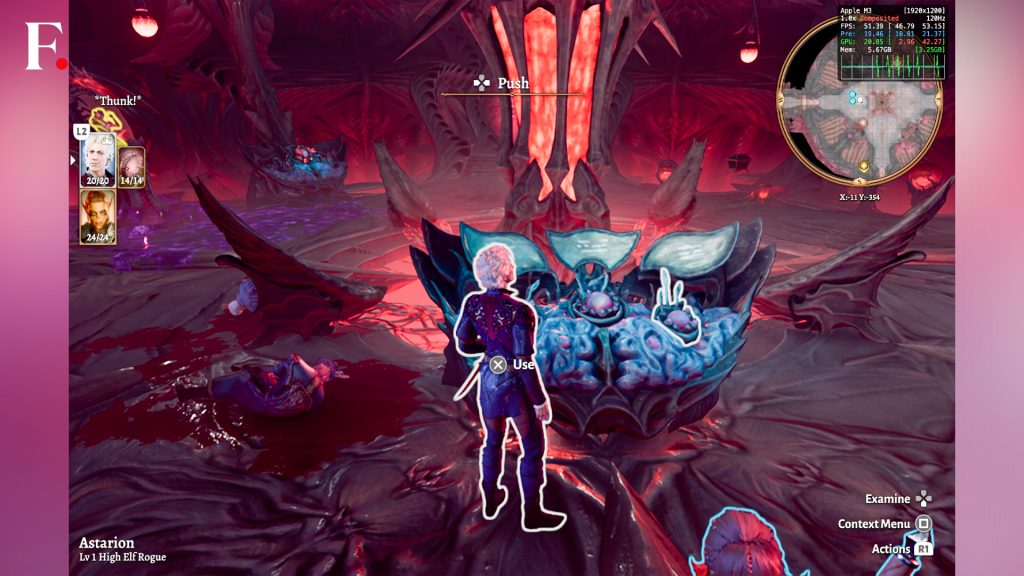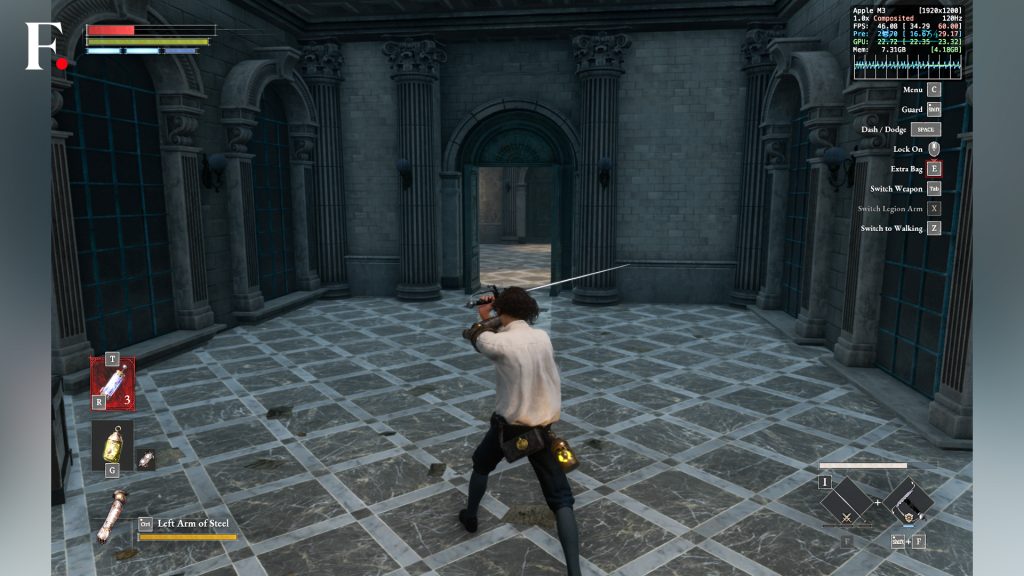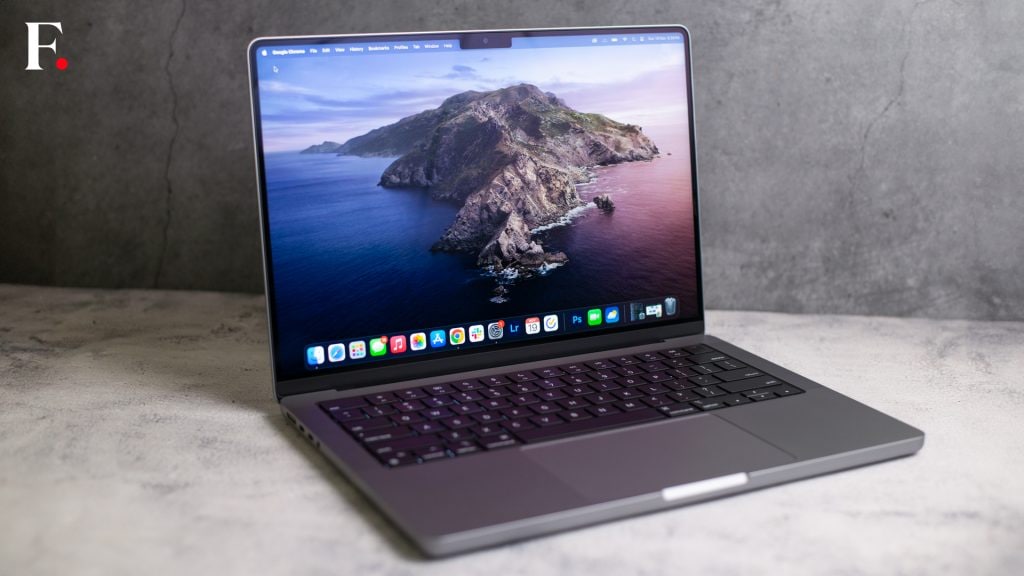Apple MacBook Pro 14-inch M3 Gaming Review: Hope springs eternal
Pros:
– M3’s powerful punch handles popular games at high settings.
– Unbelievable battery life for uninterrupted gaming sessions.
– Cloud gaming and emulation expand game library possibilities.
– Thin and light design, perfect for the mobile gamer.
Cons:
– Still not quite a dedicated gaming laptop in terms of raw power.
– Limited native MacOS game library.
– Emulation performance can vary depending on the game.
For years, MacBooks have been ostracized from the hardcore gaming scene. Underpowered graphics cards, limited compatibility, and a notorious lack of developer love conspired to keep Apple’s laptops firmly in the productivity camp.
However, with the arrival of the Apple M3 MacBook Pro, equipped with the revolutionary M3 chip boasting an 8-core CPU and a 10-core GPU, Apple throws down the gauntlet. Can this seemingly sleek machine finally crack the gaming fortress? We spent weeks battling goblins, racing through neon landscapes, and conquering strategy empires to find out.
Hardware That Impresses, But Can It Game?
Let’s begin with the heart of the beast: the M3 chip. Built on the 5nm+ process, it promises significant performance leaps over its predecessors. Apple’s claims hold true in everyday tasks and creative workflows; the MacBook Pro flies through video editing, rendering 3D models, and compiling code. But can it translate to buttery-smooth framerates in AAA titles?

The answer is complex. In terms of pure processing power, the M3 stands toe-to-toe with mid-range offerings from NVIDIA, AMD GPUs, which, is still very impressive for the MacBook’s footprint. Titles like Shadow of the Tomb Raider and Doom Eternal run beautifully at high settings, delivering a level of graphical fidelity previously unseen on any MacBook. Metal, Apple’s graphics API, unleashes the M3’s potential, squeezing every drop of performance.
Games like Lies of P and the Game of The Year 2023, Baldur’s Gate III run smoothly and beautifully, consistently netting us a pretty healthy 50-60fps at high settings.
However, none of the aforementioned games fully saturate the 120Hz refresh rate of the display, even at HD+ resolution. Furthermore, the limitations of not having native launches become apparent when facing the latest, most demanding games. Elden Ring dips into low frame rates. This inconsistency points to two key issues: game compatibility and optimized game libraries.
The Game Library
The Achilles’ heel of Mac gaming has always been the limited library. While the App Store boasts some excellent indie darlings and native Mac ports, the breadth of titles pales in comparison to Windows PCs. Major studios haven’t been incentivized to bring their latest blockbusters to macOS, leaving Mac gamers with a feeling of missing out.
Apple is trying to bridge this gap with their Game Porting Toolkit. Launched alongside the M3, this toolkit simplifies the process of porting Windows games to macOS. Early results are promising, with high-profile titles like Baldur’s Gate 3 running exceptionally well. However, widespread adoption by major studios remains to be seen.
Having said that, Apple has some other tools as well that should entice more developers and studios to launch games natively for MacOS.

MetalFX 3D: Even with more games coming to macOS, performance disparities can still exist. This is where Apple’s MetalFX 3D tech shines. This upscaling software uses machine learning to intelligently reconstruct missing details in lower-resolution textures, effectively boosting image quality without sacrificing frame rate. MetalFX 3D can work wonders on older games or titles not optimized for the M3, offering a much smoother experience.
Offline Shader Compilation: Another clever innovation is Offline Shader Compilation. This feature pre-downloads and compiles shaders – essentially, the building blocks of graphics – in the background while you’re, say, browsing the web. This eliminates the annoying stuttering sometimes encountered when launching a game for the first time, leading to a much more seamless jump into the action.
The buttery-smooth performance in many titles, the incredible battery life, and the undeniable portability combine to create a unique and compelling gaming experience. While the limitations are noticeable, I can’t help but feel optimistic. Every performance bump, every new ported game, is a step towards closing the gap. If Apple continues on this path, the day when MacBooks become serious contenders in the gaming world might not be far off.

A Promising, But Incomplete, Picture
The Apple M3 MacBook Pro is a powerful machine that undoubtedly pushes the boundaries of Mac gaming. The M3 chip truly is a beast, MetalFX 3D is a game-changer, and the Game Porting Toolkit offers hope for the future. However, the limited game library and occasional performance hiccups in the latest titles prevent it from dethroning dedicated gaming rigs just yet.
So, who is this laptop for?
Mac enthusiasts who dabble in gaming: If you primarily use your Mac for creative work but enjoy the occasional gaming session, the M3 MacBook Pro is a fantastic option. It can handle most titles beautifully while offering unmatched portability and battery life.
Early adopters and tech enthusiasts: If you’re excited about the potential of Mac gaming and willing to embrace some early adopter challenges, the M3 MacBook Pro is a great investment. By participating in beta programs and supporting developers using the Game Porting Toolkit, you can be part of shaping the future of Mac gaming.
Casual gamers and indie game lovers: If your gaming preferences lean towards indie darlings and casual experiences, the M3 MacBook Pro is a dream come true. The vast catalog of native Mac games and indie treasures combined with excellent performance for older titles and well-optimized ones creates a fantastic platform for relaxed gaming sessions.
For hardcore gamers and AAA fanatics: For now, the M3 MacBook Pro might not be your ultimate weapon. While it can handle many AAA titles at respectable settings, the occasional performance hiccup and limited library might frustrate the most demanding players. If cutting-edge visuals and bleeding-edge titles are your priority, a dedicated gaming PC or next-gen console remains the better choice.
A Classic Chicken & Egg Scenario
At the core of Mac gaming challenges lies a classic chicken-and-egg scenario. Developers hesitate to invest in Mac ports due to the smaller user base, and Mac gamers are reluctant to adopt the platform due to a lack of compelling games. This cyclical challenge is exacerbated by technical barriers, such as transitioning games from x86 to ARM architecture and the limitations of Apple’s Metal graphics API.
Apple’s initiatives to address the issue include paying developers for Mac ports, investing in Apple Arcade, and introducing the Game Porting Toolkit. However, these efforts fall short of meeting the demand for popular AAA titles.
Apple should take a cue from Valve’s success with the Steam Deck, and open up Apple’s Metal graphics API, d3d Metal, by removing its closed licensing, although that has its challenges.

The M3 MacBook Pro might not be the end-all solution for every gamer, but it’s a powerful piece of the puzzle, paving the way for a future where Macbooks hold their own in the gaming arena.
Ultimately, the M3 MacBook Pro’s gaming prowess is a mixed bag, as it stands today. However, something tells me that won’t be the case for long. While it’s not a replacement for a dedicated gaming rig, it’s a significant leap forward for Apple. For gamers open to embracing its strengths and weaknesses, it offers a unique and exciting proposition. And for the future of Mac gaming, it’s a beacon of hope, shining a light on a path towards a more inclusive and exciting future.
from Firstpost Tech Latest News https://ift.tt/AEe4CbU
Comments
Post a Comment